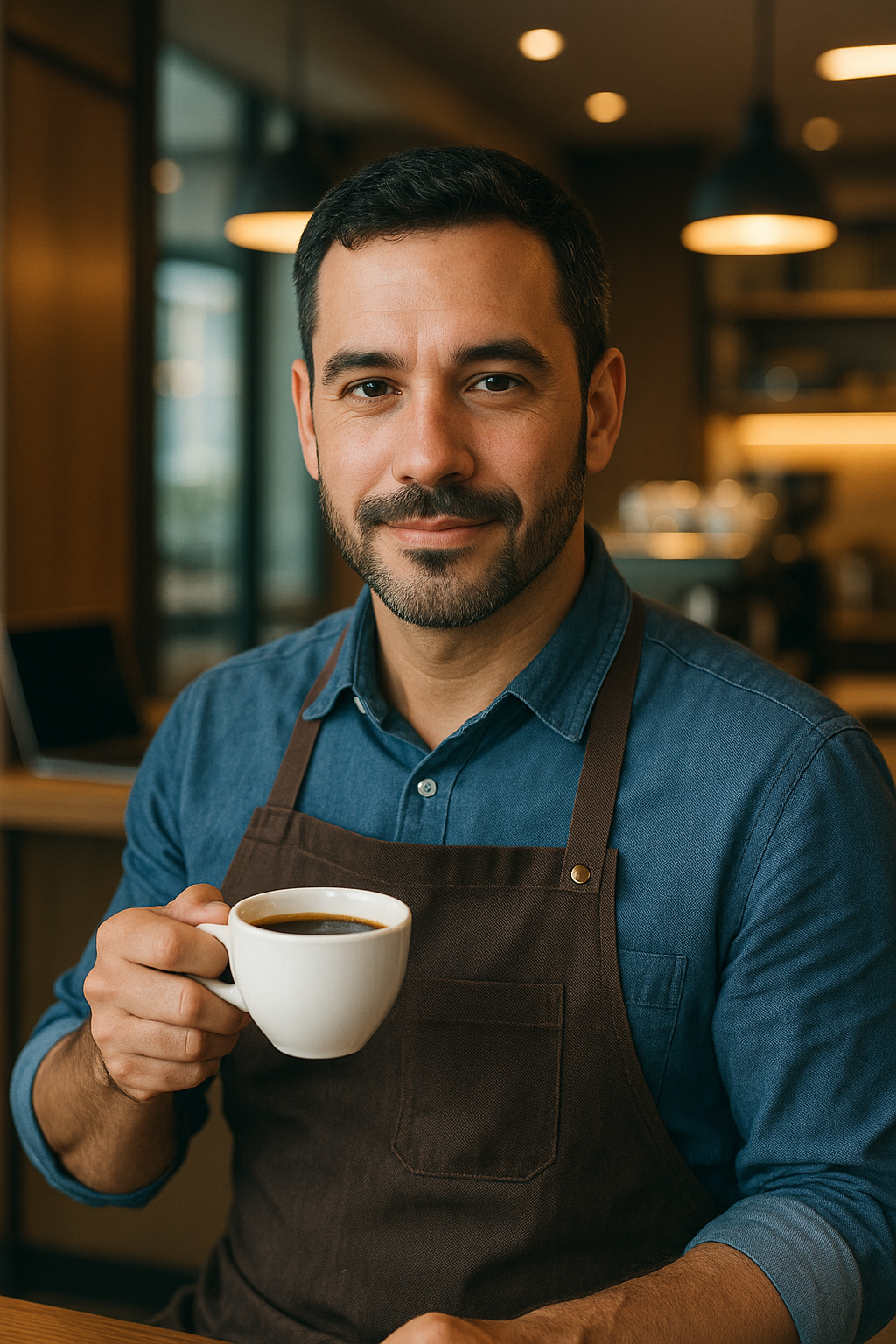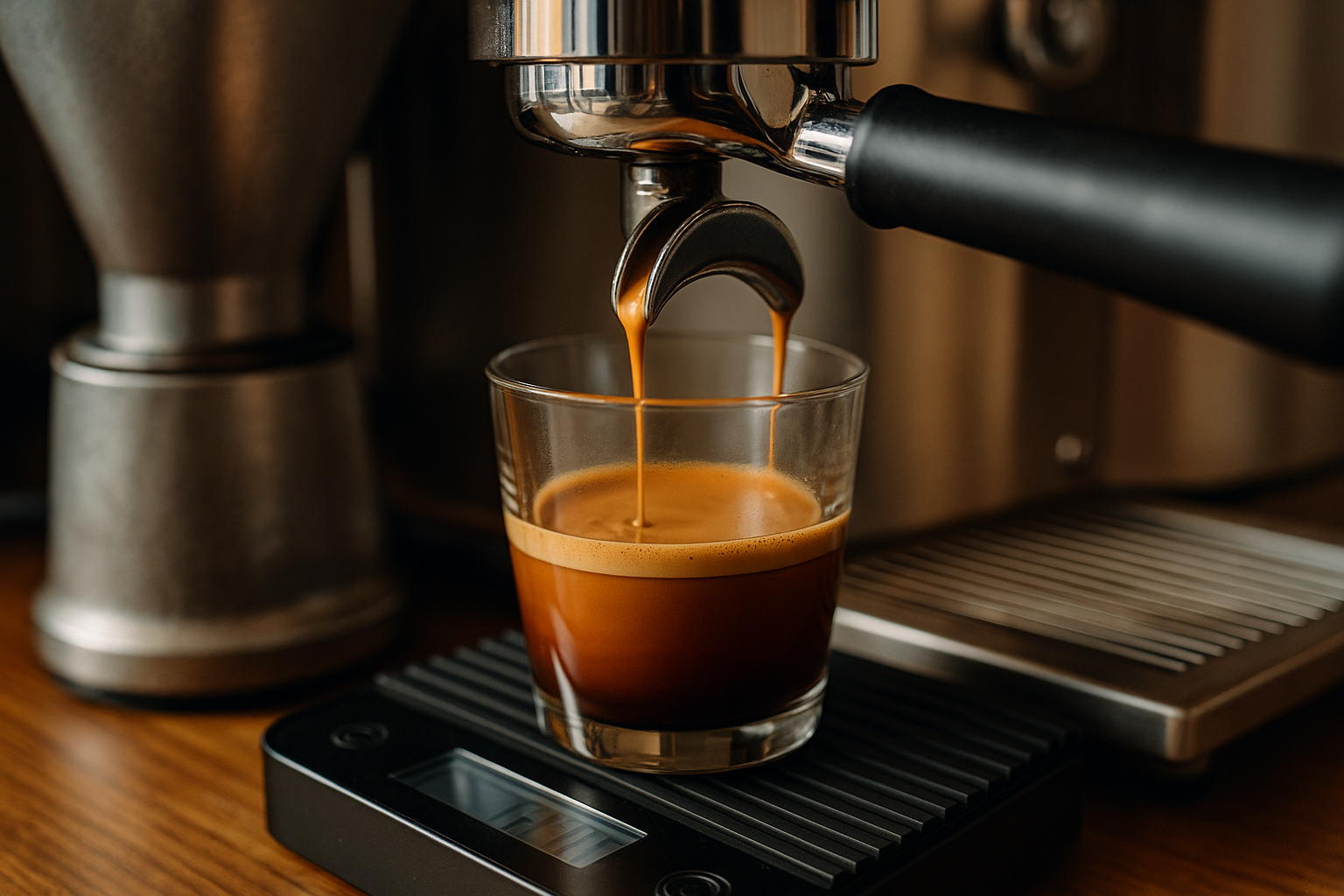Coffee extraction is one of the most important concepts a barista must understand to consistently produce great coffee.
It’s not just about pushing water through ground beans—it’s about chemistry, precision, and balance. A well-extracted cup highlights a harmonious blend of sweetness, acidity, and body.
Poor extraction, on the other hand, leads to sourness, bitterness, or weak and flat flavors. Mastering extraction allows you to dial in espresso shots, pour-over brews, or batch brews with precision and repeatable quality.
Extraction, in its simplest form, is the process of dissolving desirable flavor compounds from the ground coffee using water. The key is getting just the right amount of those compounds into your cup.
Too little and the brew is underdeveloped. Too much and it becomes overpowering or harsh.
Baristas often refer to the “sweet spot” in extraction, which lies between under and over-extraction, where the coffee sings with clarity and balance.
What Actually Happens During Extraction
When hot water meets ground coffee, it begins dissolving soluble compounds. The first compounds extracted are acids and caffeine, followed by sugars, and finally bitter compounds.
This process happens very quickly—especially in espresso—making timing and technique essential.
The challenge is getting enough of the desirable compounds without reaching into the bitter ones at the end.
That means the grind, temperature, and brew ratio must all work in harmony.
This order of extraction is key to understanding why an espresso that runs too quickly may taste sour, while one that takes too long may be overly bitter.
You’re not just brewing coffee—you’re controlling a chemical timeline. Good baristas learn how to manipulate these variables to highlight the best in every bean.
Understanding Extraction Yield
Extraction yield refers to the percentage of ground coffee that ends up dissolved in the cup. The ideal yield range is typically between 18% and 22%.
Anything below that is considered under-extracted, and anything above is often over-extracted. You can calculate yield using a refractometer, but most baristas rely on sensory feedback.
Under-extracted coffee tastes sharp, acidic, and sometimes salty, while over-extracted coffee tends to be dry, bitter, or astringent.
A properly extracted brew offers complexity, clarity, and sweetness. Getting this right is a mix of art and science, and even slight changes in technique can push your shot into or out of balance.
The Relationship Between Grind Size and Extraction
Grind size is one of the most influential factors in coffee extraction. Finer grinds increase surface area, allowing more compounds to be extracted.
Coarser grinds reduce surface contact, slowing the extraction. For espresso, you need a very fine grind—similar to table salt. For French press, much coarser—like sea salt.
Grind consistency is just as important as size. Inconsistent grinds (with lots of fines and boulders) lead to uneven extraction.
Some particles over-extract, others under-extract. This makes the cup taste confusing and muddy. Always use a burr grinder for consistent particle size and adjust based on brew time and taste.
Brew Time and Contact Time
Time determines how long water is in contact with the grounds. Too short, and not enough compounds are extracted.
Too long, and bitterness dominates. In espresso, brew time is generally 25–30 seconds. In pour-over, around 2.5 to 4 minutes depending on dose and grind. Every second matters.
One second too fast could mean sour espresso. One second too slow might mean harsh flavors. That’s why professional baristas use scales and timers for every shot.
It’s not about obsession—it’s about accuracy and reproducibility. The best coffee shops don’t guess; they measure.
Water Temperature and Quality
Water is the solvent in this entire process, and its quality and temperature directly affect extraction. Ideal brewing temperatures range between 90°C and 96°C (195°F to 205°F).
Cooler water extracts fewer compounds and can leave coffee underdeveloped. Too hot and it can burn the grounds or extract unpleasant flavors.
Additionally, the mineral content in your water alters extraction and flavor. Hard water can suppress flavor clarity, while soft water may lack extraction power.
The Specialty Coffee Association recommends water with balanced mineral content—around 150 ppm TDS. If you’re brewing at home, using filtered water or third-party mineral kits can dramatically improve flavor consistency.
Brew Ratios and Dose Control
The brew ratio is the relationship between the amount of coffee and the amount of water used. A classic espresso ratio is 1:2—18 grams in, 36 grams out.
For pour-over, a common ratio is 1:16. The ratio affects strength and extraction. If you use too much water for the dose, the result may be thin and bitter. Too little, and the cup may be overpoweringly intense.
Dialing in a new coffee often starts with finding the right dose. Once that’s consistent, you can adjust grind, time, and yield. Changing the ratio can also emphasize different elements—acidity, sweetness, or body. It’s a powerful tool for exploring flavor.
Channeling and Tamping Technique
In espresso preparation, poor distribution and tamping lead to channeling. This is when water finds weak spots in the puck and rushes through unevenly.
Channeling causes uneven extraction—some grounds get over-extracted, others under. The result is an imbalanced shot, no matter how good your beans or grind are.
To avoid this, distribute the coffee evenly in the portafilter before tamping. Use a consistent tamping pressure—about 30 pounds—and ensure the surface is flat.
Some baristas use distribution tools to improve consistency. It’s not about force—it’s about even resistance.
Pre-Infusion and Blooming
Pre-infusion is a gentle introduction of water before full pressure is applied in espresso. It allows the puck to saturate and reduce the risk of channeling.
In pour-over, the bloom phase serves a similar purpose. Adding a small amount of water initially lets gases escape, improving even saturation.
Skilled baristas use pre-infusion to control how the shot extracts. Some machines offer programmable pre-infusion, but even a manual pause after the first few drops can make a difference. This short phase sets the tone for the rest of the extraction.
Taste as the Final Metric
All the measurements and tools in the world are only guides—your palate is the final authority. Sensory evaluation helps baristas adjust their parameters.
When tasting, assess acidity, sweetness, bitterness, body, and aftertaste. Ask: is it clean, balanced, and expressive? Or is it muddled and flat?
Cupping and side-by-side comparisons are great ways to build a taste memory. The more you train your palate, the better you’ll become at diagnosing extraction issues. Is it sour?
Try a finer grind or longer brew. Is it bitter? Try a coarser grind or reduce the dose.
Common Extraction Problems and Fixes
Problem: Sour espresso
Likely under-extracted. Solution: finer grind, longer brew time, or higher dose.
Problem: Bitter brew
Likely over-extracted. Solution: coarser grind, reduce contact time, or lower dose.
Problem: Weak coffee
Likely too little coffee or too much water. Adjust ratio and check grind uniformity.
Problem: Dry mouthfeel
Often due to over-extraction or poor water quality. Recalibrate timing and use filtered water.
Solving these issues starts with understanding the science behind them. Don’t just guess—analyze and adjust. Every mistake is a chance to learn and get better.
Data Logging and Consistency
Top baristas log their brew parameters and results for each coffee. It might sound excessive, but it builds consistency.
Keeping a log helps identify patterns and replicate success. A notebook or digital app like Brewfather or Beanconqueror can be helpful.
Record your grind setting, dose, yield, brew time, water temp, and notes on taste. Over time, this data becomes your personal extraction guide.
It also helps when sharing brew recipes with team members or revisiting old favorites.
Experimentation and Development
Once you master the fundamentals, experimentation helps develop your barista instincts. Try different brew ratios. Explore the same coffee at various extraction levels.
Taste side-by-side brews with small changes in time or dose. This hands-on approach accelerates learning and strengthens intuition.
Experimentation also keeps the craft fun and engaging. Coffee is incredibly complex—there are always new beans, techniques, and tools to try.
Even seasoned professionals keep refining their skills. Being a great barista means staying curious and constantly improving.
Extraction Across Brewing Methods
While espresso is the most sensitive to small changes, the principles of extraction apply to all brewing methods. In French press, uneven grind or long brew time leads to muddiness. In AeroPress, pressure, grind, and timing must align. In cold brew, long steep times can over-extract if not watched carefully.
Understanding extraction makes you versatile. You can adapt to any method, troubleshoot with confidence, and elevate your coffee, no matter how it’s brewed. That’s what separates good baristas from great ones.
Why Consistency Wins
It’s not enough to make one great cup. Professional baristas aim for consistent excellence—every customer, every shot. Consistency builds trust, reputation, and loyalty. And consistency comes from understanding—and mastering—extraction.
Measure. Taste. Adjust. Repeat. That’s the cycle of growth in specialty coffee. When you know the science of what’s happening in the cup, you’re not just making coffee—you’re crafting an experience.

Marcelo Oliveira is a coffee enthusiast and content creator specializing in barista skills, brewing methods, equipment reviews, coffee-related health insights, and fascinating curiosities from the coffee world. With a deep passion for every step of the brewing process, he turns technical knowledge into accessible and engaging content for both beginners and seasoned coffee lovers. Marcelo’s goal is to help readers appreciate the full experience of coffee—from bean to cup.
